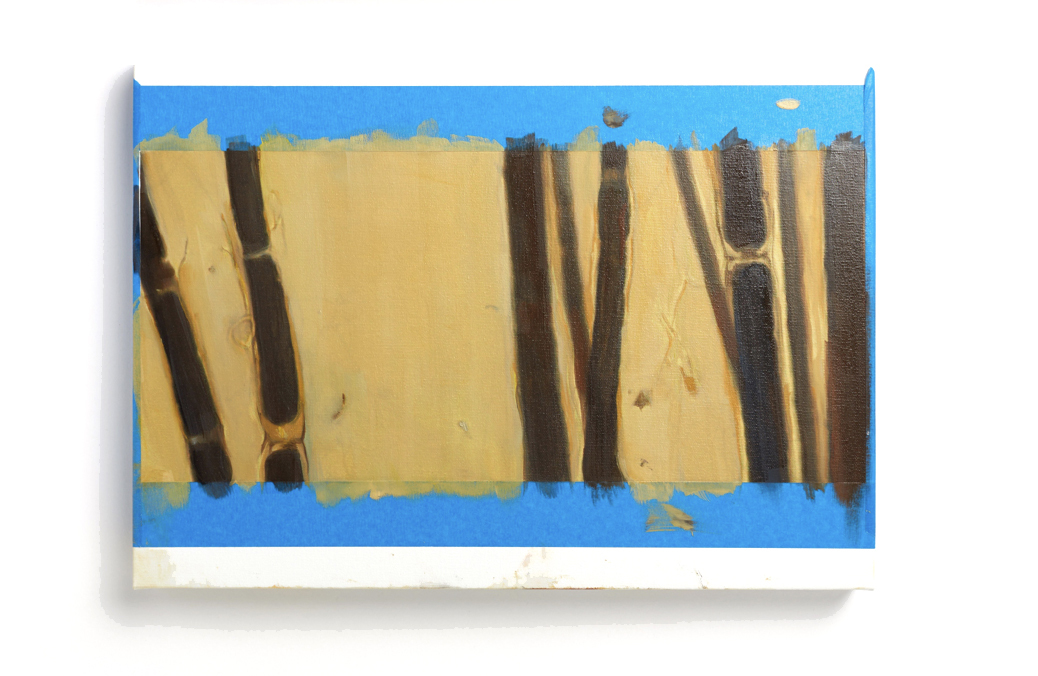
Jessica Helfand. Teased Nerve. Oil on canvas. (2016.)
April may have been the cruelest month but this is, so far, the cruelest week. (And it’s only Tuesday.) We’re having bad dreams and discordant conversations. Tempers, where there never were tempers, are flaring. Voices, once animated, are delivered in monotone registers. We’re unlikely astronauts on an extended mission to a galaxy we never knew existed, and optimism is in scarce supply. Words like despair and distress are new recruits into our fledgling prisoner vocabulary. Fragility is upon us.
To feel fragile is to feel human, which is to recognize your inherent vulnerability, not your presumed invincibility. It means less bragging, and more feeling: feeling for others who might not have it as good as you do right now, and letting that sit. It means less bombast: feeling the edges around your own fears and demons, and letting those sit. It may also mean being sad, or lonely, or giving that frisson of despair room to breathe a little: not forever, but for the minute. (And maybe for a minute or two after that.)
Being human means showing up and slowing down in equal measure. We’re not that great at it, to be honest.
But Emerson was.
If we follow the truth, he wrote, it will bring us out safe at last.
I wrote a design book about this several years ago, in which I thought about what it meant to look past the towering hubris of modern life, toward the humanity we conceal, for reasons not entirely clear, from public view. (I made a series of paintings for the book that examined particular aspects of the human body—heart ventricles, myelin sheaths, and teased nerves—for what is design but a teasing of the nerves?)
As we soldier on in this struggle, eager for redemption from a reality we never saw coming, perhaps this is a moment to turn your attention inward, and to be gentle with yourself as you do so.
Lend yourself to others, wrote Montaigne, but give yourself to yourself.
Herewith, an excerpt from the introduction.
In the end, design matters because it is an intrinsically humanist discipline, tethered to the very core of why we exist. It frames our conception of power; informs our belief about personal dignity; piques our curiosity about fiction and fantasy; highlights our yearning for beauty and romance; and engages our eternal appetite for narrative. Design matters because it gives form to our past and dimension to our future, but this is not because we sit on nice chairs, or wear pretty shoes, or pride ourselves on our good taste in belts or cars or video games. Design—which traffics in, but is not beholden to consumer culture—does not matter because it is hip or hot or cool or cheap or new or rare or bold or sexy, even though these are all qualities that may claim to entice us at any given moment, for reasons that have everything to do with who we are, not what we own. Design—which is grounded in mathematical certainties, relying upon composition and orchestration, on gesture and nuance—does not matter because it is pleasing to the eye, even though we applaud its beauty and its purpose and its presence in our lives. Design matters because of the why, not the what; the sentiment, not the acquisition. Design matters because people matter, and the purpose of this book is to examine precisely this proposition: to consider the conscience-driven rules of human engagement within which design must operate. This is a book about design as it relates to human beings. Because that is what matters most of all.
The Self-Reliance Project is a daily essay about what it means to be a maker during a pandemic. Sign up to get it delivered to your inbox here.

